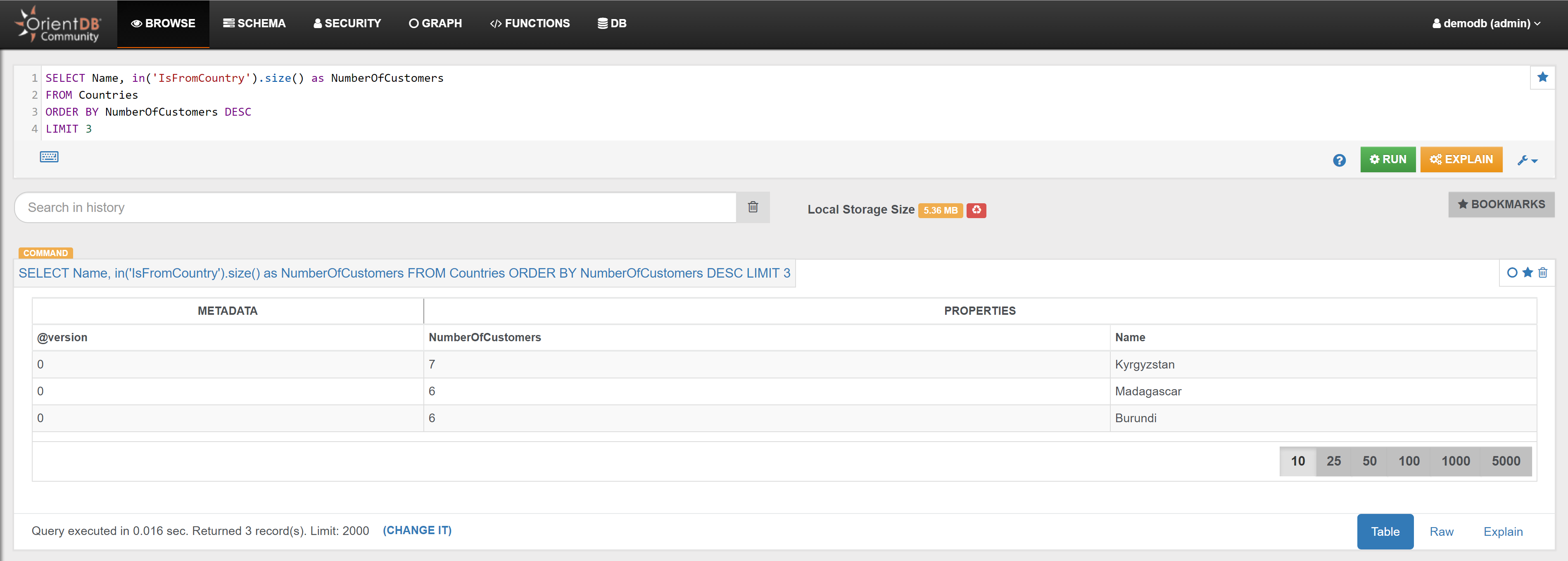Customers
Example 1
Find everything that is connected (1st degree) to Customer with OrderedId 1:
MATCH {class: Customers, as: c, where: (OrderedId=1)}--{as: n}
RETURN $pathelements
In the Graph Editor included in Studio, using 'RETURN $pathelements' as RETURN clause, this is the obtained graph:

Example 2
Find all Locations connected to Customer with OrderedId 1:
MATCH {class: Customers, as: customer, where: (OrderedId=1)}--{Class: Locations}
RETURN $pathelements
In the Graph Editor included in Studio, using 'RETURN $pathelements' as RETURN clause, this is the obtained graph:
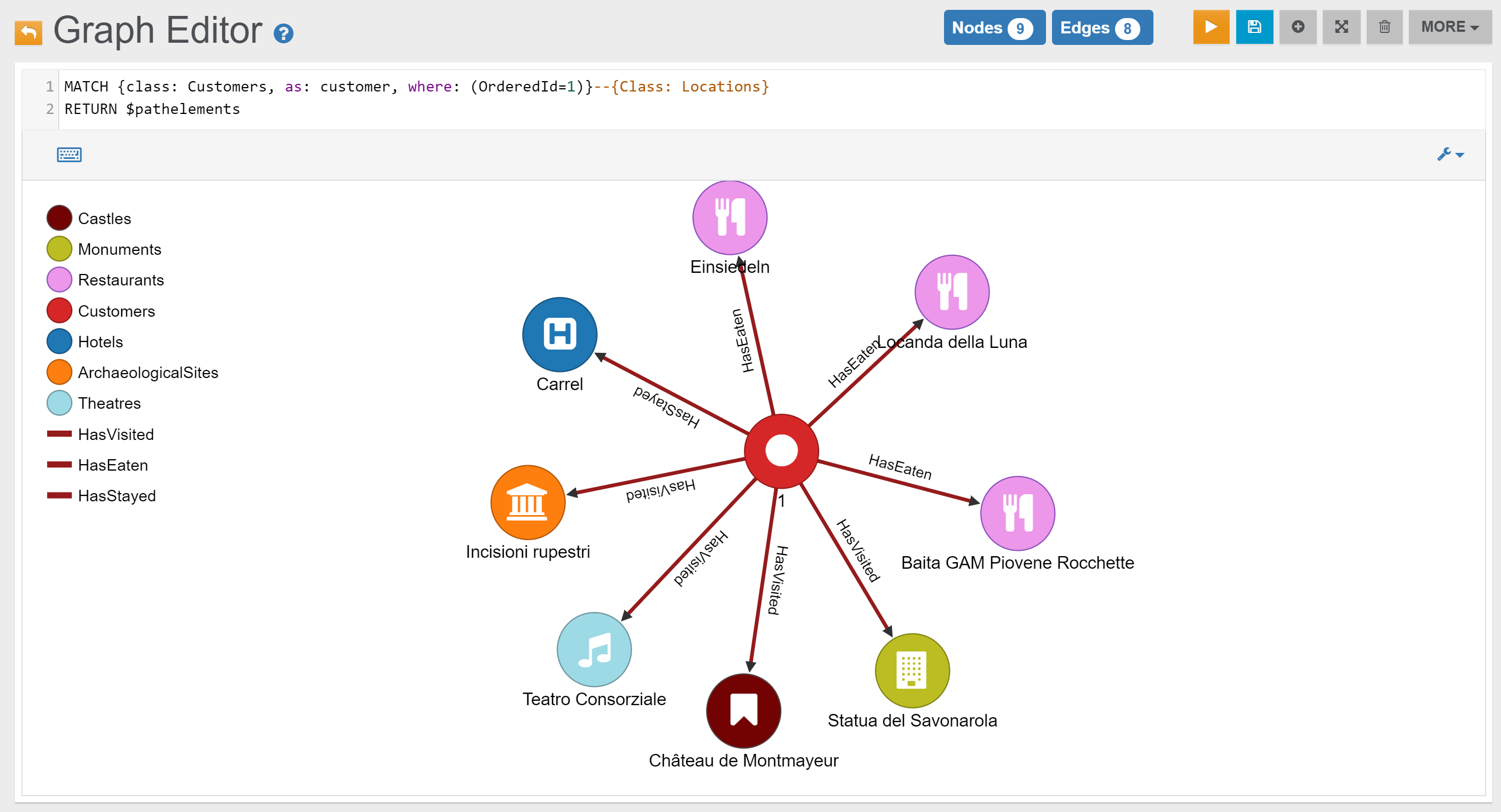
Example 3
Find all Locations connected to Customer with OrderedId 1, and their Reviews (if any):
MATCH {class: Customers, as: c, where: (OrderedId=1)}--{class: Locations, as: loc}-HasReview->{class: Reviews, as: r, optional: true}
RETURN $pathelements
In the Graph Editor included in Studio, using 'RETURN $pathelements' as RETURN clause, this is the obtained graph:

Example 4
Find the other Customers that visited the Locations visited by Customer with OrderedId 1:
MATCH {class: Customers, as: customer, where: (OrderedId=1)}--{class: Locations, as: loc}--{class: Customers, as: otherCustomers, where: (OrderedId<>1)}
RETURN $pathelements
In the Graph Editor included in Studio, using 'RETURN $pathelements' as RETURN clause, this is the obtained graph:
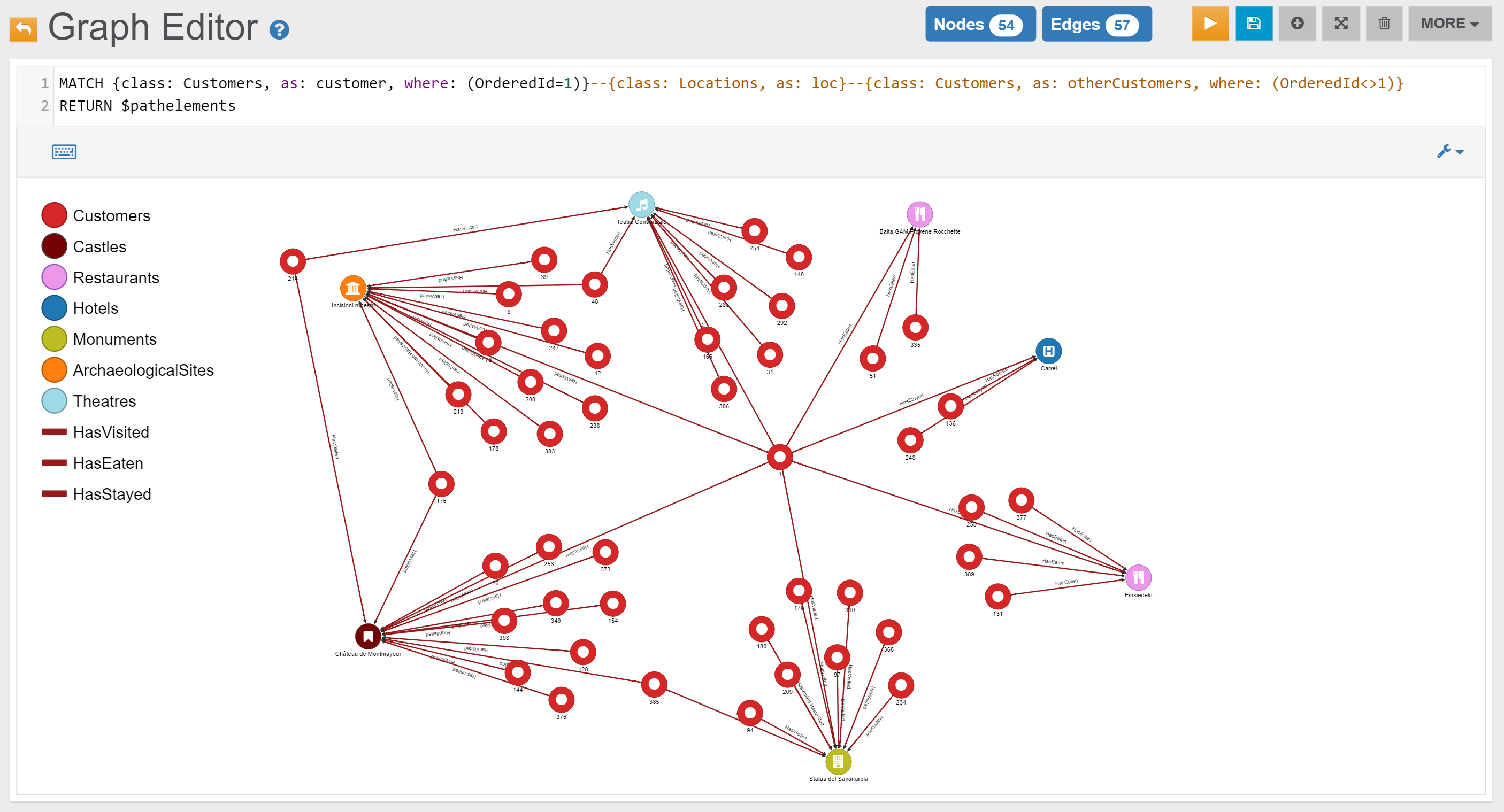
If we want to return also also their Profile names, surnames and emails:
MATCH {class: Customers, as: customer, where: (OrderedId=1)}--{class: Locations, as: loc}--{class: Customers, as: otherCustomers, where: (OrderedId<>1)}-HasProfile->{class: Profiles, as: profile}
RETURN otherCustomers.OrderedId, profile.Name, profile.Surname, profile.Email
ORDER BY `otherCustomers.OrderedId` ASC
In the Browse Tab of Studio, using 'RETURN otherCustomers.OrderedId, profile.Name, profile.Surname, profile.Email' as RETURN clause, this is the obtained list of records (only few records are shown in the image below):
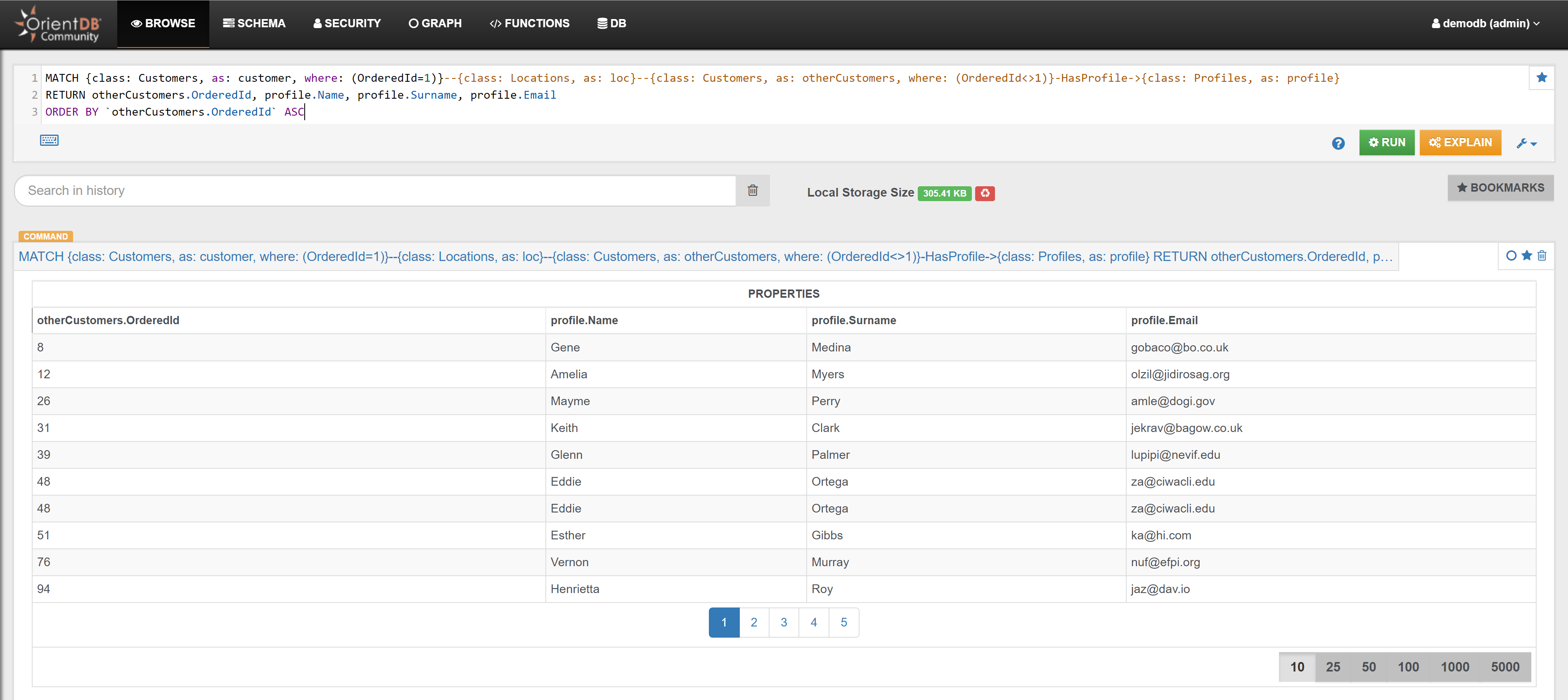
Example 5
Find all the places where Customer with OrderedId 2 has stayed:
MATCH {as: n}<-HasStayed-{class: Customers, as: c, where: (OrderedId=2)}
RETURN $pathelements
In the Graph Editor included in Studio, using 'RETURN $pathelements' as RETURN clause, this is the obtained graph:
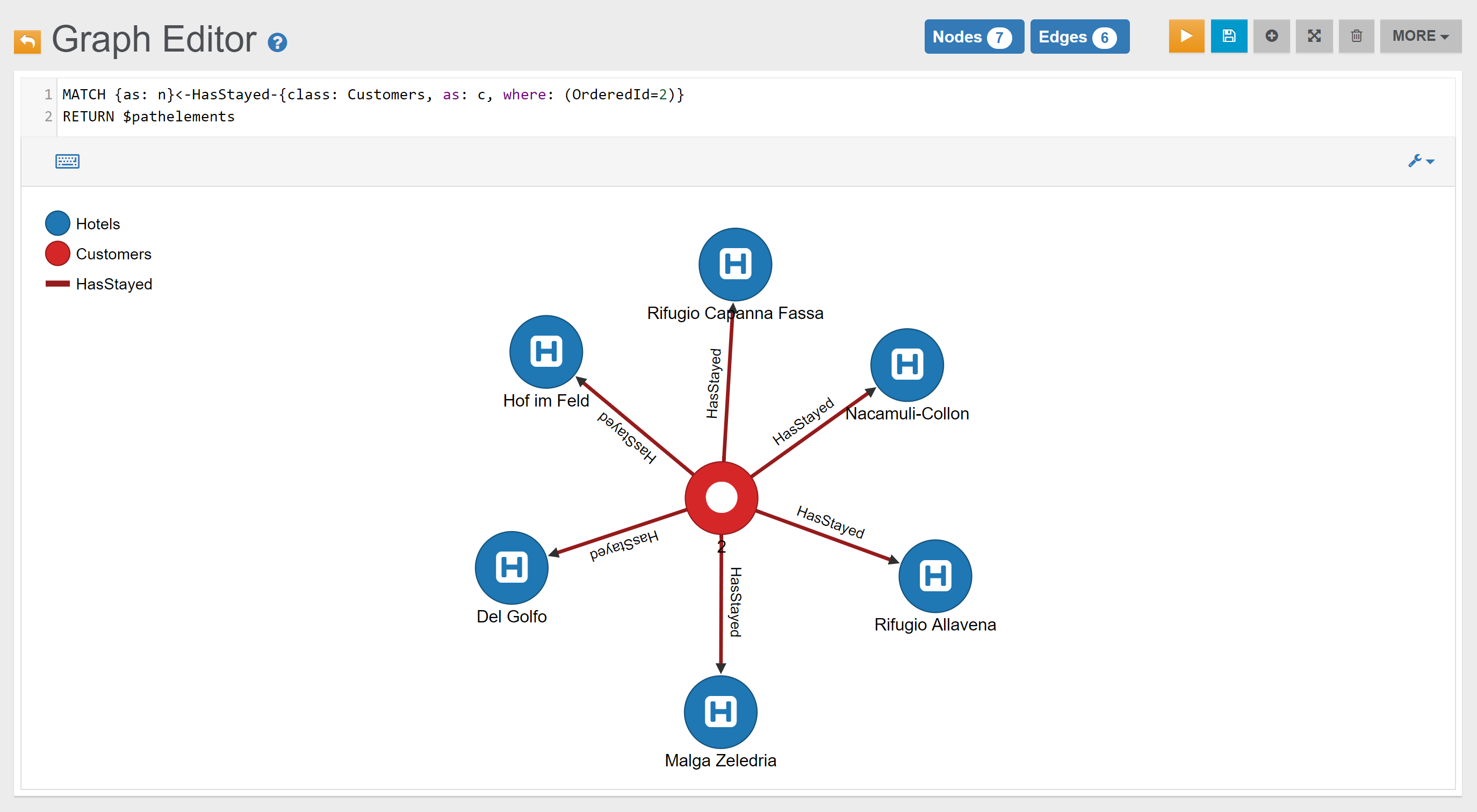
Example 6
Find all places where Customer with OrderedId 1 has eaten:
MATCH {as: n}<-HasEaten-{class: Customers, as: c, where: (OrderedId=1)}
RETURN $pathelements
In the Graph Editor included in Studio, using 'RETURN $pathelements' as RETURN clause, this is the obtained graph:
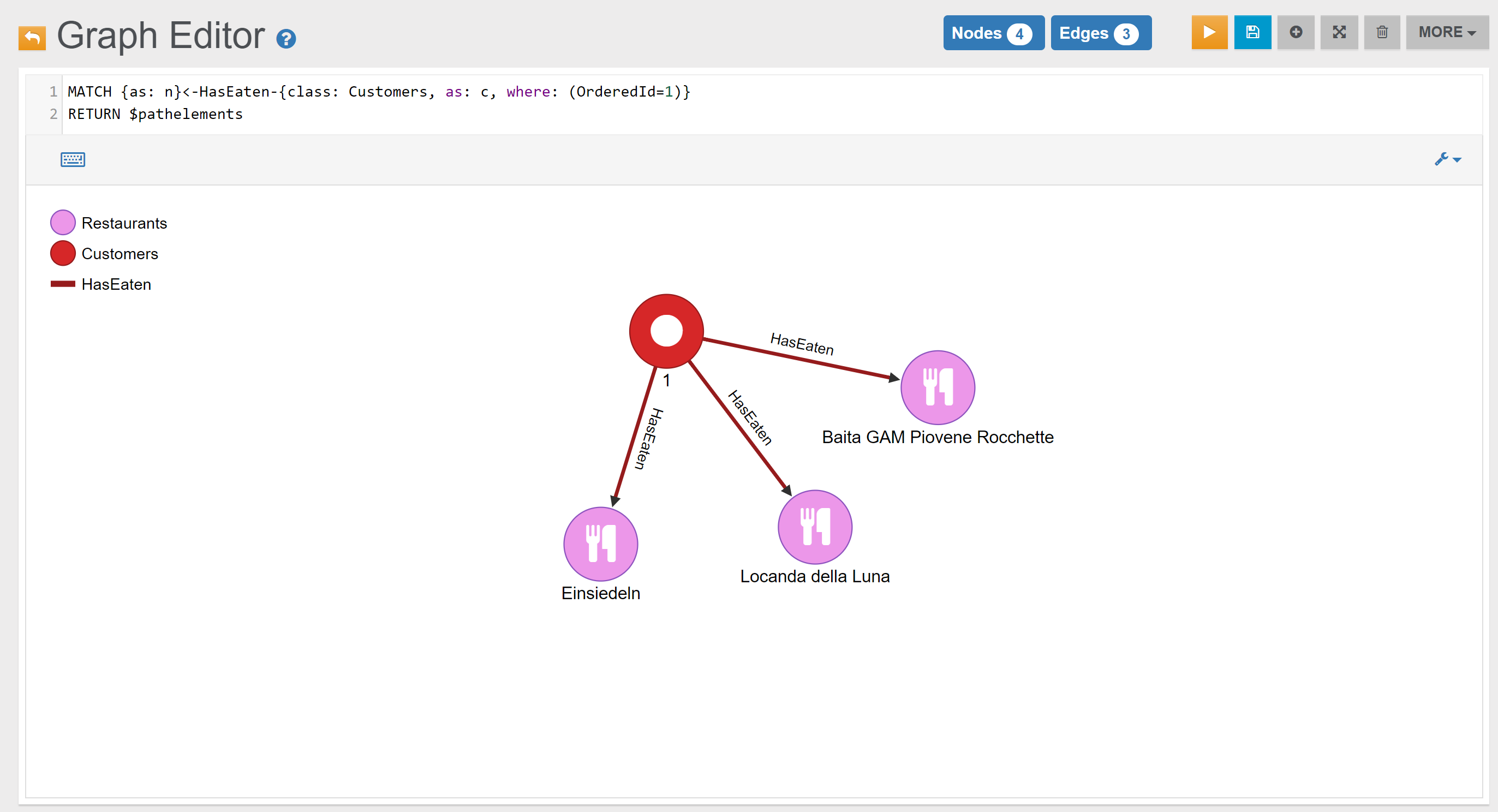
Example 7
Find the 3 Customers who made more reviews:
SELECT
OrderedId as CustomerId,
out("MadeReview").size() AS ReviewNumbers
FROM `Customers`
ORDER BY ReviewNumbers DESC
LIMIT 3
In the Browse Tab of Studio, using the query above, this is the obtained list of records:
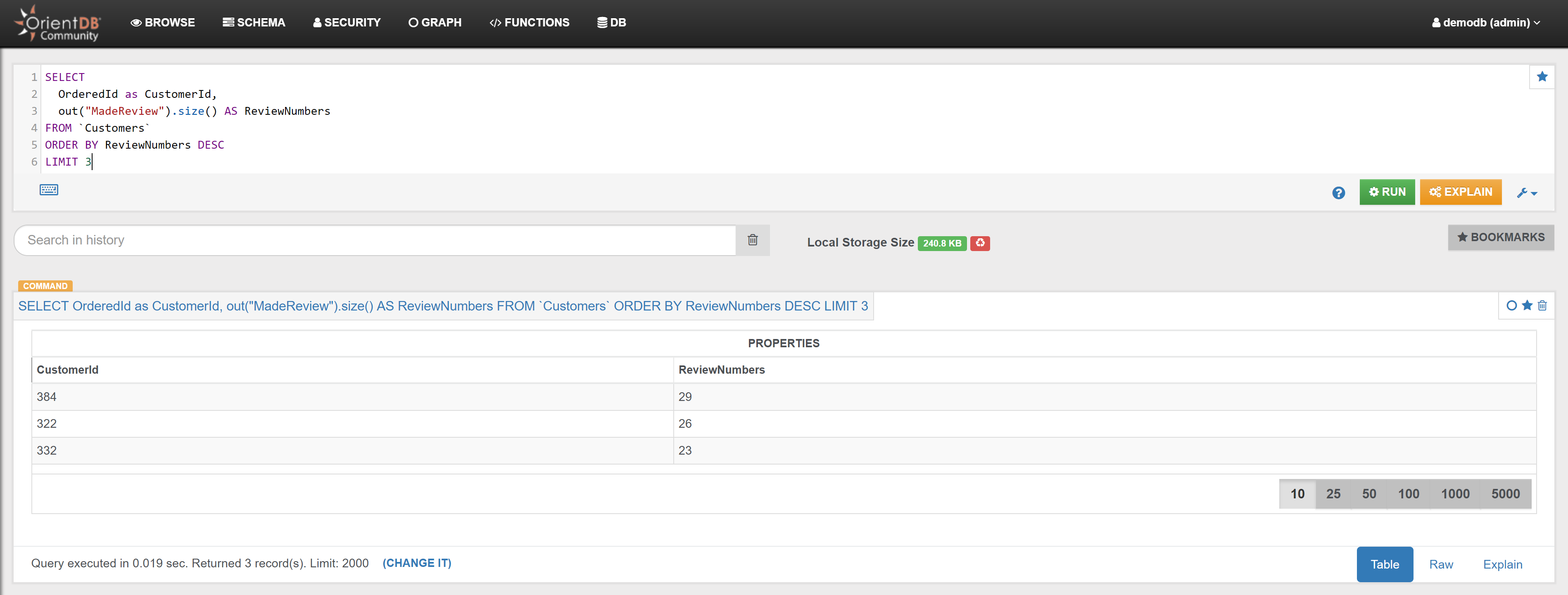
Example 8
Find all Orders placed by Customer with Id 2:
MATCH {class: Customers, as: c, where: (OrderedId=1)}<-HasCustomer-{class: Orders, as: o}
RETURN $pathelements
In the Graph Editor included in Studio, using 'RETURN $pathelements' as RETURN clause, this is the obtained graph:

Example 9
Calculate the total revenues from Orders associated with Customer with Id 2:
SELECT sum(Amount) as TotalAmount
FROM (
SELECT expand(in('HasCustomer'))
FROM Customers
WHERE OrderedId=2
)
In the Browse Tab of Studio, using the query above, this is the obtained list of records:
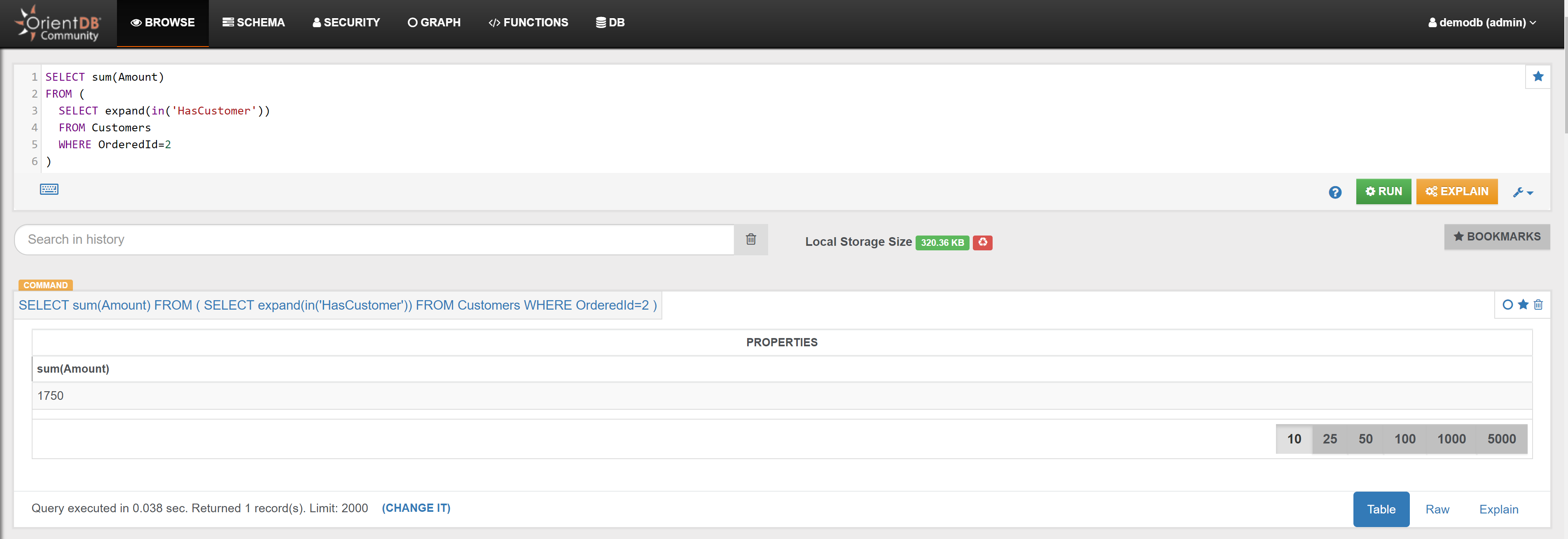
Example 10
Find the 3 Customers who placed most Orders:
SELECT
OrderedId as CustomerId,
in("HasCustomer").size() AS NumberOfOrders
FROM Customers
ORDER BY NumberOfOrders
DESC LIMIT 3
In the Browse Tab of Studio, using the query above, this is the visualized result:
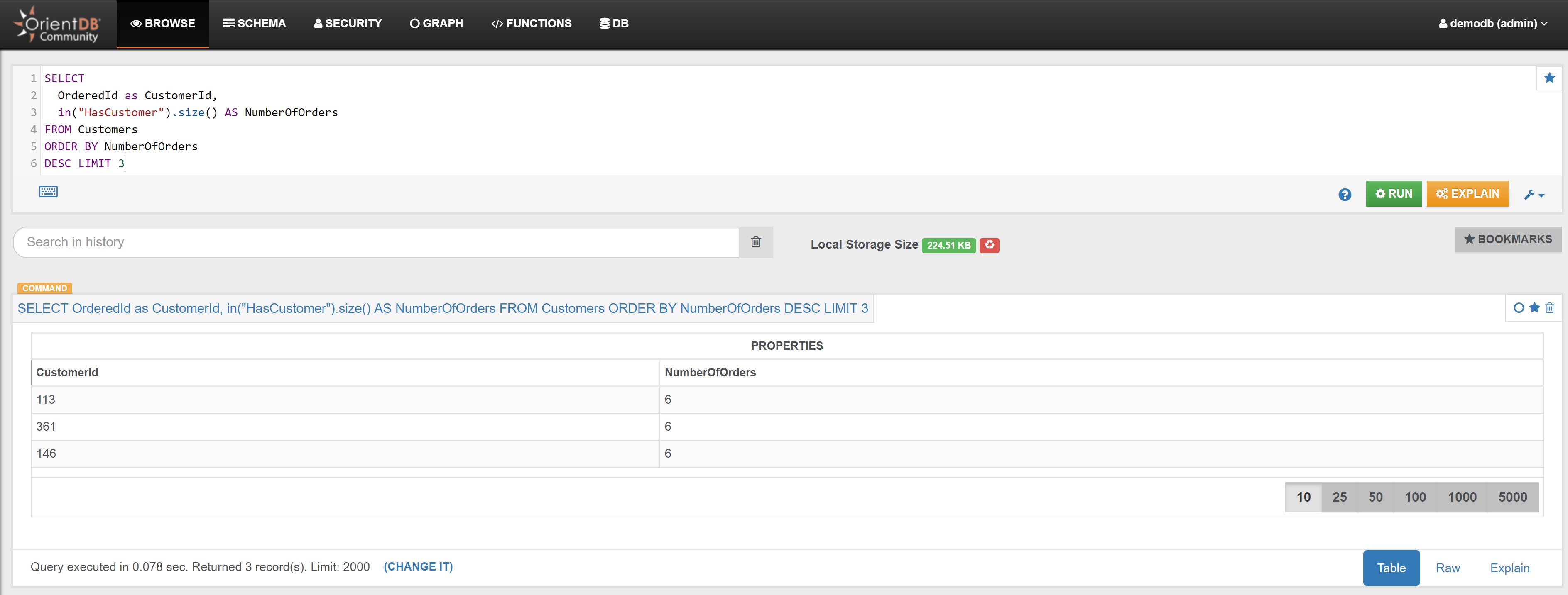
Example 11
Find the top 3 Countries from where Customers are from:
SELECT
Name as CountryName,
in('IsFromCountry').size() as NumberOfCustomers
FROM Countries
ORDER BY NumberOfCustomers DESC
LIMIT 3
In the Browse Tab of Studio, using the query above, this is the obtained list of records:
